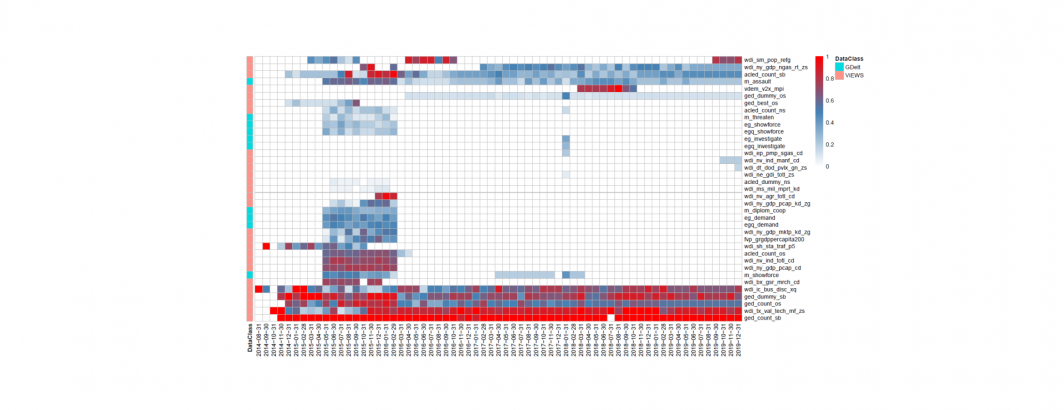
This paper by Fulvio Attinà, Marcello Carammia and Stefano M. Iacus utilizes GDELT as an input to conflict forecasting:
This article illustrates an approach to forecasting change in conflict fatalities designed to address the complexity of the drivers and processes of armed conflicts. The design of this approach is based on two main choices. First, to account for the specificity of conflict drivers and processes over time and space, we model conflicts in each individual country separately. Second, we draw on an adaptive model — Dynamic Elastic Net, DynENet — which is able to efficiently select relevant predictors among a large set of covariates. We include over 700 variables in our models, adding event data on top of the data features provided by the convenors of the forecasting competition. We show that our approach is suitable and computationally efficient enough to address the complexity of conflict dynamics. Moreover, the adaptive nature of our model brings a significant added value. Because for each country our model only selects the variables that are relevant to predict conflict intensity, the retained predictors can be analyzed to describe the dynamic configuration of conflict drivers both across countries and within countries over time. Countries can then be clustered to observe the emergence of broader patterns related to correlates of conflict. In this sense, our approach produces interpretable forecasts, addressing one key limitation of contemporary approaches to forecasting.